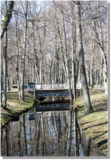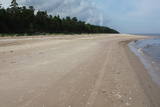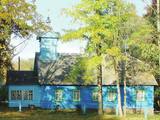| Нo | Название | Описание |
|---|---|---|
|
Teritorijas apskates nolūkos ir izveidota un labiekārtota dabas izziņas taka. Dabas liegums atrodas Abavas senlejas dabas parka teritorijā. Taka iepazīstina ar vienīgo krūmu čužas savvaļas augšanas vietu Latvijā. |
||
|
This park is found in the Otepää highlands and offers an outstanding example of how the terrain of a protected natural territory can be used for recreation, sports and active leisure. The infrastructure of the park is perfect for such activities and is of a high level of quality.
|
||
|
Pirts noma, izmitināšana, ēdināšana, banketu zāles noma, internets, makšķerēšana, volejbola laukums. |
||
|
Guided wilderness experience day-trip combines bog shoeing and canoeing. First is walking through the forest and reaching the largest peat-bog in Estonia – Kuresoo. Wear bogshoes and walk on the wild landscape, followed by wilderness lunch. The trip ends with a relaxing canoe trip along Soomaa meandering rivers. |
||
|
Мельница построена в период с 1867-го по 1869-й год по типу голландского проекта. Свое название она получила благодаря фамилии первого хозяина – Риба. На мельнице, которая является одним из хорошо сохранившихся архитектурных памятников такого типа в Латвии, создана образовательная экспозиция «Путь зерна», рассказывающая о развитии сельского хозяйства в Земгале, традициях зерноводства и выпечке хлеба. Также предлагается экскурсия в сопровождении гида. Мельница является частью комплекса отдыха (гостиница, ресторан, мельница) «Рожмалас». |
||
|
"Anima Candles" sveces ir roku darbs. Svecēm pieejami vairāki dizaini, kas variē gan krāsās, gan izgatavošanas metodē. Krāsu un smaržu klāsts ir plaši pieejams. Tās izgatavotas no pārtikas rūpniecībā izmantojamā parafīna vai ekoloģiskās sojas. Sveču ražotnē tiek piedāvātas sveču liešanas meistarklases.
|
||
|
The rock is not too big (2.1 m high, 15 m in circumference), but since the early 20th century it has been a popular tourist destination. There is a lovely view of the
|
||
|
Находится на кладбище Бертуля. Создан по проекту Л. Швалбе. На лицевой стороне памятника помещена бронзовая плита с надписью «С глубокой благодарностью за Латвию павшим народным героям. 10-ое Руйиенское отделение Даугавас ванаги». На тыльной стороне памятника находится надпись «Бог, Отечество, Народ». Памятник был восстановлен в 1989-м году. |
||
|
Находится на обочине автодороги А9 в полукилометре от поворота на Лестене в направлении Риги. Камень (автор O. Фелдберг) установлен в 1991 году (на месте бывшего дома „Румбу”) в память о защитниках Курземской крепости, которые, выдержав десятикратное превосходство советской армии, дали возможность ~ 300 000 латвийским военным беженцам эмигрировать от следовавшего за этим советского террора. |
||
|
The park was established to protect the Venta River valley and the landscapes that are around its tributaries. On the west bank of the Venta, at Papilė, there is a cliff from the Jurassic period which is unique in the Baltic States, has been known since 1925, and has layers in which more than 300 forms of life have been identified over the course of time.
|
||
|
Atrodas Rendā, pie tilta pār Abavu. Mazs, jauks krodziņš, kas atrodas vēsturiskā ēkā ar patīkamu interjeru. Piemērota maltītes ieturēšanas vieta ne tikai tiem, kas pārvietojas pa ceļu, bet arī Abavas laivotājiem. Strādā g.k. vasaras sezonā. |
||
|
Varniku mežā (Varnikų miškas) ir izveidota patiesi interesanta dabas izziņas taka, kas iet cauri dažādiem biotopiem – skujkoku un ozolu mežiem, purvainu mežu un sūnu purvu ar akačiem un nelieliem purva ezeriņiem, kur uzceltas divas skatu platformas. Mitrajās vietās un purvā ir izveidotas koka laipas. Šī ir populāra pastaigu vieta. Taka ir lokveida un marķēta. Tās apskatei būs nepieciešama ~ pusotra stunda. |
||
|
Юрмала (второй по величине город Латвии) основан в 1959 году, путем объединения городов Кемери и Слока с Юрмальским районом города Риги. Юрмала протянулась на 32 километра вдоль побережья Рижского морского залива. В свое время курорт Юрмалы был одним из известнейших объектов подобного рода в Северной Европе. Этому способствовало развитие местного и международного транспорта (дилижансы, паровозы, поезда) и движения. Первых гостей-купальщиков приняли Дубулты, где в 1834 году построили первую гостиницу, а в 1847 – первый курзал. В XIX веке начали работать первые лечебные учреждения. С 1834 г. началось стремительное строительство гостиниц. Развитие курорта прервала Первая мировая война. После войны снова наблюдался быстрый расцвет курорта – от 12 тысяч (1920 г.) до 32 тысяч (1935 г.) отдыхающих. Подобно юрмальским развивались и кемерские курорты, массовый характер которые приобрели в советский период. Современная Юрмала – популярное место проведения концертов, фестивалей, выставок, спортивных соревнований и других публичных мероприятий. |
||
|
Усадьба сельского туризма расположена в живописном месте Жямайтии рядом с рекой Вирвите. Гостям предлагаются следующие развлечения: плавание на байдарках, катание на велосипедах, ловля форели в старом русле реки Вирвите, экскурсии по историческим местам Жямайтии. В усадьбе основан музей старинных мотоциклов. |
||
|
Вершупите – улицу Броценю пересекает Вершупите,
которая петляет через город Кемери. Над водной
«пучиной» речушки переброшено 10 маленьких и
романтических мостиков. Каждый из них имел свое
название.
|
||
|
Жилое здание построено в начале XVIII в., а в середине XIX в. было перестроено. В самой усадьбе священника и в комплексе все еще ведутся восстановительные работы. С сентября 2009 года в комплексе имения священника работают три дома отдыха реколекционного центра Латвийской Евангелическо-лютеранской церкви. Рядом виднеются развалины старой конюшни. |
||
|
На ферме долины Лапяй разводят много разных животных: историческую португальскую породу лошадей Лузитано, Шетлендских пони, других теплокровных европейских лошадей, коз англо-нубийской породы, грубошерстных овец генофонда Литвы, а также большое стадо разных домашних птиц. Хозяева рассказывают посетителям о породах животных, об их происхождении, приглашают покататься верхом на лошадях, а также пони и понаблюдать за животными. |
||
|
Находится в центре Барты, рядом со средней школой. В основной экспозиции музея «Бартские традиции изготовления и ношения народного костюма в XIX – XX столетии» представлены девичьи, женские и мужские наряды и их разнообразие. Посетители могут принять участие в процессе ткачества и вышивания орнамента на бартских рубахах. Вместе с этнографическим ансамблем «Барта» предлагается участие в образовательных программах «Народные костюмы Барты» и «Поют женщины Барты». |
||
|
В Гипке была основана первая мореходная школа в Курземе! Это было в 1869-м году, спустя несколько лет после основания мореходной школы в Айнажи. Это была мореходная школа 2-й категории, в которой готовили штурманов дальнего плавания и капитанов судов каботажного плавания. В 1894-м году мореходную школу перенесли в Мазирбе. До открытия мореходной школы в этом здании с 1860-го года действовала школа, а в 1867-м году специально для нужд мореходной школы в здании был надстроен второй этаж. Здание сохранилось до наших дней и переоборудовано под жилой дом. Школа (в Гипке и Мазирбе) на протяжении своего 28-и летнего существования выпустила более чем 200 профессиональных моряков и содействовала кораблестроению в прибрежных ливских поселках. (Источник: Ройский ТИЦ) |
||
|
Моленная Штиканской старообрядческой общины. В 40-х
годах 20 века было организовано строительство храма на старом
фундаменте. Эту моленную строили братья Ульян и Эпифан
Рогозины. В храме находится охраняемое произведение искусства
– Евангелие.
|
||



















